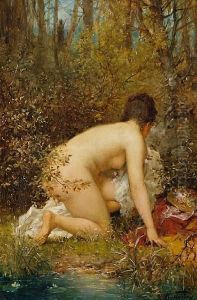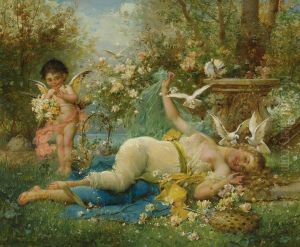Joseph Antoine Bernard Paintings
Joseph Antoine Bernard, born in 1866 in Vienne, Isère, France, was a notable French sculptor whose work significantly contributed to the art world in the late 19th and early 20th centuries. Bernard's career is often highlighted by his dedication to the principles of monumental sculpture and his unique approach to form and volume, which distinguished his work from that of his contemporaries. He was deeply influenced by the Art Nouveau movement, yet his sculptures also echoed the classical tradition, blending modernity with timeless themes and techniques.
Educated at the École des Beaux-Arts in Lyon and later in Paris, Bernard was a student of famous sculptors such as Auguste Rodin and Antoine Bourdelle, which profoundly influenced his artistic direction. Despite the prominence of his teachers, Bernard developed his distinct style, characterized by a combination of realism and stylization. His sculptures often depicted human figures, with a particular focus on the grace and expressiveness of the human body, a reflection of his studies and his personal artistic inquiries.
Throughout his career, Bernard participated in numerous exhibitions, including the prestigious Salon des Artistes Français, where he received critical acclaim. His works were celebrated for their emotional depth and technical mastery, earning him several awards and honors, including the Legion of Honour, France's highest order of merit for military and civil merits. Bernard's sculptures can be found in public spaces and museums across France, serving as enduring testaments to his skill and vision.
Joseph Antoine Bernard's legacy is that of a sculptor who navigated the transition between traditional and modernist sculptures with ease and originality. By the time of his death in 1931, he had left behind a body of work that continues to be studied and admired for its contribution to the development of modern sculpture. His dedication to exploring the human form and emotion through bronze and stone remains a significant chapter in the history of French art.


